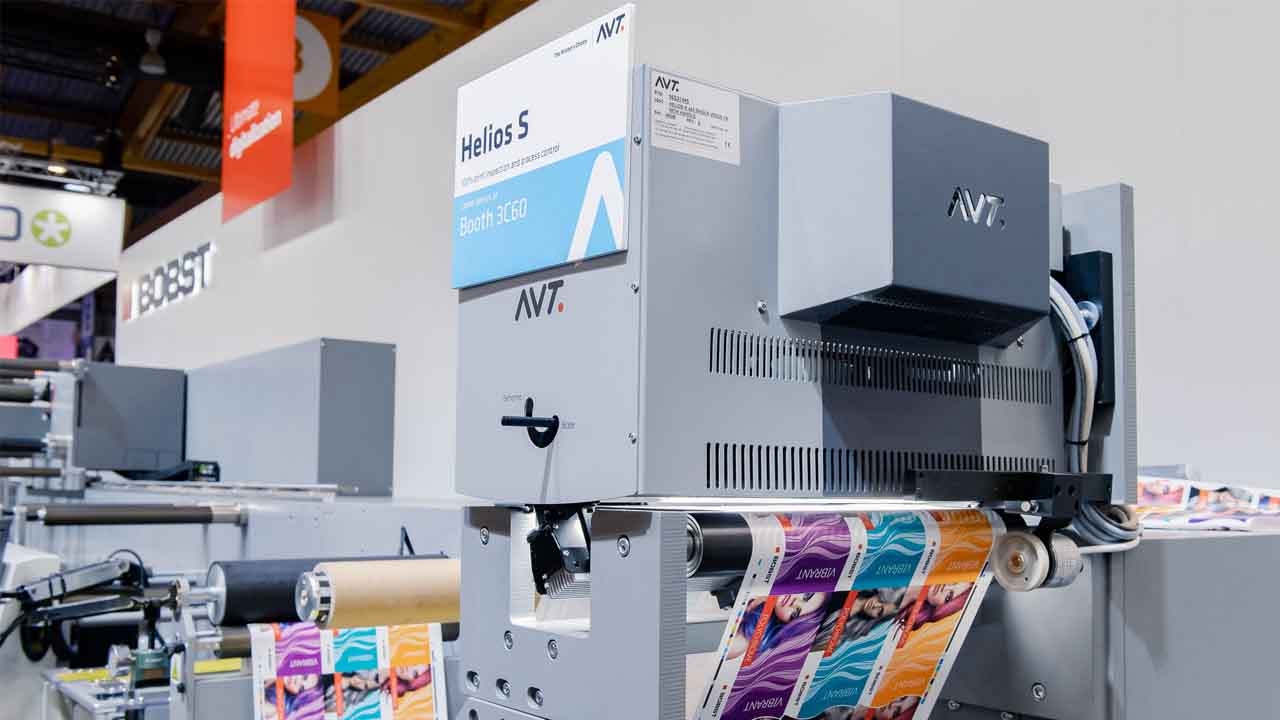Esko launches new AVT Varnish Inspection module
The new inspection system enables labels converters to achieve maximum output while reducing waste in their print production process.

Esko has launched a new print inspection module that can inspect and detect defects in varnish coatings during a live label print run.
The Varnish Inspection module for the AVT Helios 100 percent inspection system enables labels converters to achieve maximum output while reducing waste in their print production process, according to Esko. The new module delivers accuracy and crucially requires no UV additives to the varnish, with a single inspection system that offers broad compatibility.
Jan De Roeck, director of marketing, industry relations and strategy at Esko, said: ‘With raw material costs at an all-time high and the pressure for all businesses to become more sustainable, reducing waste while maximizing throughput is a top priority for labels converters. Ensuring accuracy on the print run helps drive efficiency, increasing productivity while reducing waste. But inspecting the varnish coat has traditionally been a time-consuming – and therefore costly – process. While conventional systems and the human eye can’t see clear varnish, with this new Varnish Inspection module for our AVT Helios 100 percent inspection system, operators can now see and inspect without slowing or stopping a narrow web run.’
A significant percentage of labels need varnish for both design and protection. Typically, this involves pausing the press to select a label and manually inspecting it with a light box. Additionally, UV additives may be necessary for the varnish, which is restricted in certain applications. This process often interrupts production flow.
‘Built on the deep inspection expertise of the Esko AVT team, we developed the Varnish Inspection module to address all these issues in a single automated solution that optimizes accuracy, safety and convenience. With this new innovation, one system does it all - print inspection, varnish inspection, barcode verification, variable data, color and any other process and quality needs. Moreover, this is all done in parallel and at the highest production speeds with no compromise,’ added De Roeck.
‘The AVT Varnish Inspection module offers broad compatibility, working seamlessly with countless types of varnish coatings. Whether it is matt, glossy, or tactile, the technology delivers amazing viewing and inspection results.’
The precise, detailed inspection ensures varnish coating defects such as misregister, partial and full varnish starvation are detected immediately once the run starts. The module automatically inspects for and alerts the operator to varnish starvation. It also checks for and alerts to any misregistration.
The Varnish Inspection module includes a new, patented optical module, which adds to the existing inspection system optic head, as well as software including patented algorithms, developed to support clear coating inspection. A new Varnish PDF separation viewer identifies the varnish layers.
‘The AVT Varnish Inspection module adds an extra layer of precision to any current inspection setup. Through identifying ordinarily invisible errors, label converters can avoid costly starvation issues and say goodbye to time-consuming misregistration. It delivers users significant benefits in terms of run speeds, overall quality of the final product label, and in waste reduction –benefits magnified by the varnish being inspected as part of the standard print inspection workflow, and not as a time-consuming additional workflow step,’ De Roeck said.
The functionality and interface is easy, both for existing and new users of the AVT inspection. The new Esko AVT Varnish Inspection module can be used on all AVT Helios R, B, S, Turbo+, Turbo HD and Turbo HD+ systems.
Stay up to date
Subscribe to the free Label News newsletter and receive the latest content every week. We'll never share your email address.

